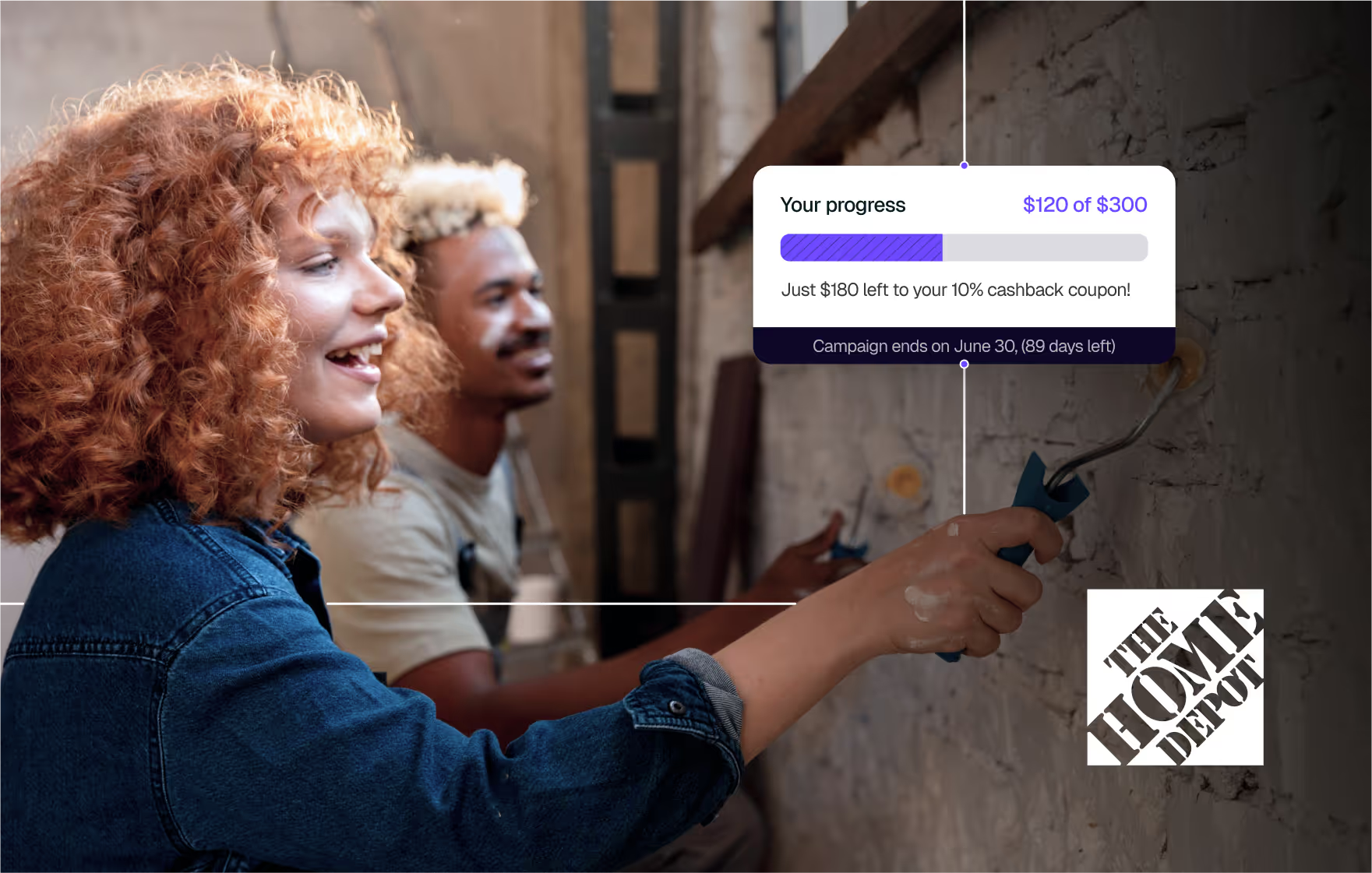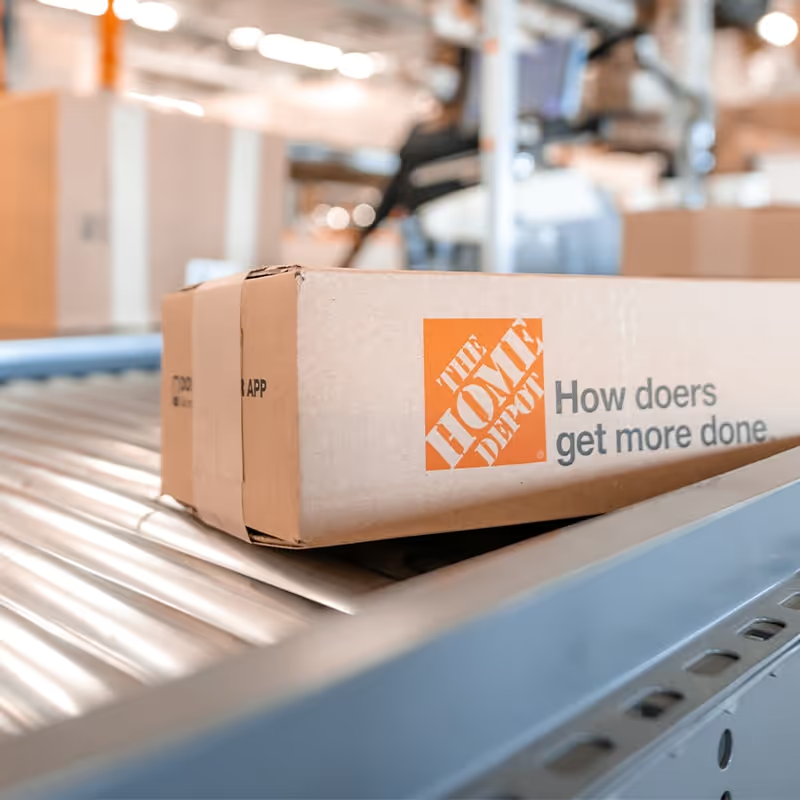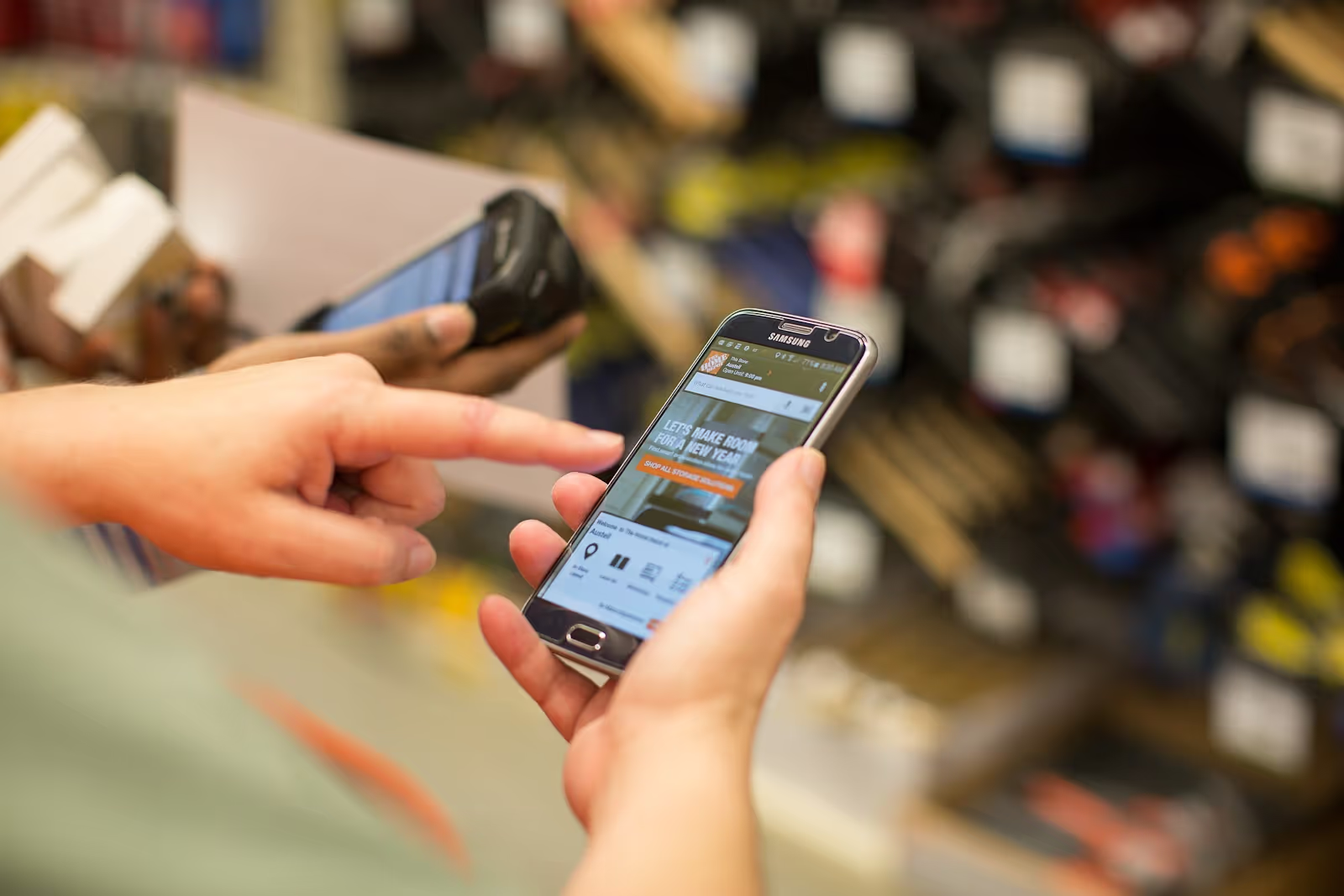🎥 Video: 3 Use Cases to Increase Football Club Revenue with Gamification.
Save your seat.


In retail, loyalty is often won with points, perks, and promotions, but in the B2B world, it is far more complex. Professional contractors, builders, and commercial clients don't just buy products; they manage projects, budgets, and teams under immense pressure. For them, loyalty is not about earning a free coffee after ten purchases - it's about securing a reliable partner who helps them save time, cut costs, and grow their business.
That's why The Home Depot's Pro Xtra program stands out. It doesn't simply reward purchases; it aligns with the company's overall business strategy of capturing a disproportionately valuable customer segment by turning routine transactions into enduring partnerships. Pro Xtra is a loyalty program built specifically for construction professionals, offering tailored benefits and integrations with partner platforms to add value for these customers.
This blog post takes a closer look at how Home Depot's loyalty program, Pro Xtra, leverages a tiered loyalty structure to address the unique demands of B2B relationships. We'll explore how the program evolved into a three-tier system and why this design matters for contractors.

Unlike consumer loyalty programs, where emotional connection and instant gratification often drive results, B2B loyalty operates under different rules.
Decision cycles are longer, purchases involve multiple stakeholders, and the stakes are higher – both financially and operationally. That is why B2B loyalty programs are typically more expensive to run, harder to measure, and often plagued by lower-than-expected engagement. Also, companies face challenges ranging from fragmented data and attribution problems to the difficulty of balancing diverse customer needs.
Simply put, in B2B loyalty, the margin for error is small, but the potential upside is enormous: higher retention rates, increased wallet share, and stronger competitive differentiation.
The Pro Xtra program first launched in 2012, aiming to give contractors and commercial customers tailored benefits that went beyond the standard consumer shopping experience. Early features included exclusive offers, purchase tracking, volume pricing, and paint rewards.
A press release noted that Pro Xtra allowed professionals to "access exclusive offers, paint rewards, volume pricing, purchase tracking, and purchase authorization via text" (Home Depot, 2020).
By 2023, Home Depot recognized that the program needed to evolve to meet the increasing expectations of B2B customers and the growing competitiveness of the professional marketplace.
As Hector Padilla, Executive Vice President of Outside Sales and Service, explained:
Pros make up about 10 percent of The Home Depot's customer base and approximately half of our sales. …we're focused on serving the Pro no matter where, when and how they choose to shop with Home Depot – The Home Depot Corporate Newsroom, Jan 2023
The new tiered model not only expanded financial rewards but also layered in service enhancements and relationship-based perks. Molly Battin, Chief Marketing Officer of Home Depot, underscored the strategic intent behind the shift:
This tiered loyalty system unlocks a new experience of rewards and savings for our Pro customers with more benefits than ever, right at their fingertips – The Home Depot Corporate Newsroom, Jan 2023
In practice, this meant that while all Pro Xtra members still receive foundational benefits like paint rewards and volume pricing, higher-spending contractors can unlock Elite and VIP tiers, which introduce premium services such as priority support lines, automatic preferred pricing, dedicated account management, and exclusive experiences.
The revamp effectively transformed Pro Xtra from a flat rewards scheme into a tiered loyalty ecosystem, designed not just to save contractors money but to integrate Home Depot into their operations and strengthen long-term partnerships.
Now, Home Depot's program is a three-tier, omnichannel loyalty ecosystem - Member, Elite, and VIP - crafted to serve varying scales of professional customers.
The Pro Xtra account is designed specifically for professional contractors and business customers, offering features like expense tracking, purchase history management, and order management to streamline project organization and business operations.

The Pro Xtra program mirrors a B2B customer lifecycle rather than a simple consumer rewards loop. It combines a phased progression model with multi-layered loyalty mechanics.
Members can assemble a project list for large orders, which allows them to access volume pricing and receive the lowest price available through the Volume Pricing Program.
By working with Pro associates to compile their project list, contractors can improve their cost savings and maximize the benefits of bulk purchasing.
Contractors join via the website, app, or Pro Desk. Immediate benefits activate, including paint rewards, discounts, dedicated checkout lanes, and reserved parking.
Behind the scenes, the system begins purchase tracking across accounts and employees, laying the foundation for future segmentation and personalized engagement.
All purchases, whether online or in-store, feed into a centralized platform. Features such as digital receipts, purchase history, and Text2Confirm authorization integrate Home Depot into contractors' daily operations, turning Pro Xtra into a workflow tool rather than just a discount program.
Data analytics then segment contractors into tiers based on actual spend and behavior.
Contractors are notified of their progress toward Elite or VIP tiers. These updates tap into psychological motivators – achievement (tier climbing), exclusivity (elite privileges), and reciprocity (rewards scaling with commitment). The result is purchasing consolidation, as contractors shift more of their spend to Home Depot to unlock higher-level rewards.
Once Elite or VIP status is reached, benefits evolve into premium services. Elite members gain priority support lines and automatic preferred pricing, while VIPs receive dedicated account management, tailored purchase solutions, and exclusive experiences.
At this level, Home Depot transitions from vendor to strategic business partner, reinforcing loyalty through efficiency, trust, and recognition.

At its foundation, transactional loyalty ensures contractors see clear financial returns on their engagement. Through volume pricing, Pro Xtra Dollars, and paint rewards of up to 20%, the program delivers direct and measurable cost savings.
These benefits create a rational incentive to consolidate purchasing with Home Depot, turning loyalty into a line-item advantage on a contractor's balance sheet.
Beyond financial incentives, operational loyalty integrates Home Depot into the everyday business processes of professional contractors. Features such as purchase tracking, digital receipts, and the Text2Confirm tool streamline expense management and employee oversight.
By embedding itself in back-office systems, Home Depot reduces administrative friction while simultaneously raising switching costs, since contractors become accustomed to relying on its digital infrastructure.
At higher tiers, the program emphasizes relational loyalty, shifting the dynamic from transactional discounts to partnership-driven value. Elite members gain access to priority support lines, while VIPs are assigned account managers and invited to exclusive events.
These relationship-based services foster trust, deepen engagement, and signal to contractors that Home Depot is invested in their long-term success, not just their immediate purchases.
The program helps professional customers save money through exclusive discounts and benefits, making cost savings a key advantage of membership. Unlike standard consumer programs, Pro Xtra's tiered architecture, specialized business tools, and exclusive perks are designed to create tangible value for business clients, helping them streamline operations and maximize their purchasing power as they scale.
Access to Member, Elite, and VIP tiers, with higher spending unlocking bonus perks such as dedicated account management, prioritization, preferred pricing, and exclusive VIP experiences.
Purchase tracking for up to two years, business dashboards, job-cost breakdowns, quick reorder lists, and expanded online account management to simplify business operations, expense control, and tax reporting.
Deep discounts for bulk orders over $1,500 and tailored pricing for job-lot quantities on essential building materials, supporting project-based purchasing strategies.
Tiered savings with up to 20% off on paint purchases, designed specifically for businesses with regular, high-volume paint needs.
Reserved parking, dedicated checkout lanes, and two-hour order turnaround for online and phone orders make it easy for contractors to complete their purchases and manage supply runs – minimizing downtime and streamlining job-site operations.
Elite support phone lines, personalized purchase assistance from Home Depot experts, and account management services for quick issue resolution and consultative support. Support staff are available to discuss loyalty program options and help members maximize their benefits.
Access to member-only sales, digital and app-based coupons, special events, and product previews, providing additional cost-saving and networking opportunities.
Enhanced rental credits, priority access, and unique offers on professional tool rental – valuable for businesses scaling crews or taking on varied projects.
Earned rewards for frequent purchases, known as Pro Xtra Dollars, can be spent on future transactions, improving business cash flow management.
Fast, secure approval flow for employee purchases, ensuring control and efficiency in delegated buying.
These rewards are engineered not just to incentivize repeat business but to directly increase operational efficiency, project profitability, and business growth for B2B clients, making Home Depot a partner in professional success.
Pro Xtra shows that B2B loyalty isn't just about rewards; it depends on enterprise-grade infrastructure built to handle complex, multi-stakeholder transactions across every channel.

To replicate this success, loyalty software managers need to focus on five critical capabilities:
Every purchase – online, in-app, at POS, or via Pro Desk – maps to a single Pro Xtra ID, which ensures that a contractor's orders and their employees' purchases roll into one profile for accurate tier tracking and rewards.
Home Depot uses microservices to instantly update tiers and rewards the moment a transaction closes. Customers see progress in dashboards across app, web, and in-store systems.
For loyalty management platforms, this means an event-driven backbone capable of high-volume, sub-second responses that modern API-first loyalty solutions can deliver.
To keep every channel aligned, Home Depot combines hourly data syncs with event-driven updates. Machine learning detects mismatches in real-time.
Since B2B buyers often browse, order, and pick up within hours, loyalty program software must guarantee near-perfect data consistency across all customer touchpoints.
Through Pro Integrations, Home Depot connects directly to contractors' CRM, ERP, and procurement tools. Purchases can flow straight into job costing systems like Buildertrend or Moraware. The lesson: B2B loyalty software works only if it plugs seamlessly into customers' existing workflows through robust API connections.
The platform must juggle complex logic – tier thresholds, employee roll-ups, bulk discounts, and product-specific perks like paint rewards – without breaking. Home Depot's rules engine handles this across segments and business models within their comprehensive loyalty management system.
Here’s the irony: the customers worth the most are also the hardest to keep. A contractor juggling fifty projects in five states doesn’t care about brand “warmth.” They care about speed, reliability, and tools that integrate seamlessly into their existing systems. Their loyalty isn’t emotional.
That’s the complexity paradox. Consumer loyalty can run on points, perks, and the occasional freebie. B2B loyalty, on the other hand, has to run on serious infrastructure. It’s about real-time data syncing, integrations with tools most marketers have never heard of, and reward logic flexible enough to handle wildly different buying patterns.
The real trick? Making all that invisible. To the customer, it should feel effortless, even as dozens of backend systems are working overtime. In B2B, loyalty isn’t about delight. It’s about being so reliable, so embedded in operations, that switching is unthinkable.
B2B loyalty deals with longer sales cycles, multiple decision-makers, and higher stakes. It’s less about quick perks and more about saving time, cutting costs, and integrating into business operations.
Contractors join for free and receive immediate benefits, including paint discounts and purchase tracking. As they spend more, they progress to Elite and VIP, unlocking perks such as preferred pricing, dedicated support, and account managers.
Higher tiers add personalized service, exclusive events, and business management tools.
Home Depot's Pro Xtra program uses enterprise technology for real-time integrations, unified customer management, and business software connections, according to company sources.
Key features:
Measuring B2B loyalty program ROI requires tracking metrics beyond transaction counts. Focus on financial indicators like average order value increases by tier, customer lifetime value growth, and purchase consolidation rates where successful programs capture significant portions of customer wallet share.
Key operational improvements to monitor include:
Establish baseline measurements before launch and use attribution models that account for longer B2B sales cycles to accurately capture program impact on both financial performance and customer relationship strength.
Typically 6-12 months. Expect 2-3 months for architecture setup, followed by rules configuration, integrations, testing, and phased rollout.
The system supports hierarchical accounts, where employee purchases roll up to a single Pro Xtra ID. Features like Text2Confirm let owners approve employee purchases in real time.
CRM and ERP systems are essential, but integrations with procurement, accounting, and industry-specific tools (like Buildertrend) make the program truly useful for contractors.
Get a weekly dose of actionable tips on how to build and grow gamified successful loyalty programs!




